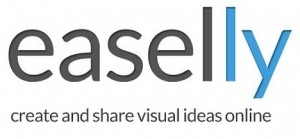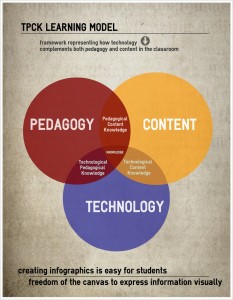Creativity Tools Grow Ideas
Growing Ideas with Technology
Students can be limited by the resources provided to them. Budget constraints may limit students accessibility to current technology tools in the classroom. I wanted to explore some free technology tools students can access from any computer. The tools presented are limited only by creativity and inspiration.
Animoto is a video creation tool that has been around for over a decade. Animoto is a video creation service that is available both online and for apps on mobile devices. Complex editing skills are not required to create stunning videos with still images and up to 10 second video clips. Text can be added as image captions to help tell the story. The mood of the video can be heightened by selecting one of the 300 plus copyright free songs. Educators can apply for a school license or a free teacher account to monitor student use and creation. Once videos are completed, the videos can be downloaded, emailed, uploaded to a website, or exported to YouTube. This is a very powerful tool because of the high quality and visually appealing videos students can create. The free teacher plus account is limited to 50 students and is only a six-month free subscription. After the six-month free subscription has ended the teacher must reapply. An obstacle for some teachers may be the responsibility to monitor students accounts and ensuring they do not violate the Animoto Education Terms of Use.
An infographic is a graphic with information/data, which is sorted and arranged in a visually appealing manner. Easel.ly is a theme based web-app for students to create infograpics “easily” just as the name mentions. The process is as simple as selecting a template, adding text, add graphics objects, and saving the creation. One of the benefits of the infographic is how is attracts viewers to the graphic and then disseminates information through the artwork of the graphic. This is a powerful tool in our visually rich media environment from billboards and magazine ads to name a few places we see art all around us. With Easel.ly students can choose from a number of templates to begin their infographic. This process allows students to focus on the content they are presenting and not their artistic abilities. I created an infographic of the TPACK model and the procedures were simply, drag, drop, add text, and save. The creation was limited only by my imagination. The only drawback I see is students will have to set-up an account to save and/or export infographics they create.
 A method to get students engaged and to create is the use of Make Beliefs Comix creator. Students have the freedom to create fun and entertaining comic strips using a web-app utilizing Adobe Flash Player software. This is a fun tool to use as I was completely engaged with creating my own cartoon as shown on the left. One advantage with using Make Beliefs Comix is students do not have to create an account. Access to the comic strip is free of charge. Students first begin by selecting a character and adding this character to the page. Text or thought boxes are available to use to tell to help express comic adventure. A number of backgrounds and objects are available to compliment the cartoon and reinforce the content. Comic strips can be printed and turned in. One disadvantage is the limitation of characters, backgrounds, and objects to choose from. One method Make Beliefs Comix uses to solve the limitation issue is the ability to manipulate the options you choose, such as scale objects, flip objects, and bring objects to front. Another disadvantage I can see from using Make Beliefs Comix is the difficulty to save the cartoon. A “screen grab” of the comic is required to save the comic and then the use of an image editing software to crop the “screen grab” to the size of the comic strip.
A method to get students engaged and to create is the use of Make Beliefs Comix creator. Students have the freedom to create fun and entertaining comic strips using a web-app utilizing Adobe Flash Player software. This is a fun tool to use as I was completely engaged with creating my own cartoon as shown on the left. One advantage with using Make Beliefs Comix is students do not have to create an account. Access to the comic strip is free of charge. Students first begin by selecting a character and adding this character to the page. Text or thought boxes are available to use to tell to help express comic adventure. A number of backgrounds and objects are available to compliment the cartoon and reinforce the content. Comic strips can be printed and turned in. One disadvantage is the limitation of characters, backgrounds, and objects to choose from. One method Make Beliefs Comix uses to solve the limitation issue is the ability to manipulate the options you choose, such as scale objects, flip objects, and bring objects to front. Another disadvantage I can see from using Make Beliefs Comix is the difficulty to save the cartoon. A “screen grab” of the comic is required to save the comic and then the use of an image editing software to crop the “screen grab” to the size of the comic strip.
TPACK Model and Animoto
The correlation with Animoto and the TPACK model is to utilize the technology in a way that it is transparent in the learning process. Students have the ability to access Animoto almost anywhere they are whether it is in the classroom or on the go with the mobile app. The knowledge acquired occurs when the pedagogy, content, and technology are interweaved together. The pedagogy with using a tool such as Animoto occurs because students construct their own knowledge through the social nature of taking photographs and videos to create a video story. Students are learning from actively “doing” throughout the video creation. Students have to problem-solve by deciding upon what digital content they will utilize further deepen their knowledge. The digital content students acquire is constructed with Animoto and manipulated by the student for the desired story to be told.
Students can use Animoto to create video stories for their core classes. A video story could be produced from a book students read in their English class by retelling the story in their own creative way. Instead of using a diorama for a Social Studies project, students could reenact events throughout history. Geometric 2D and 3D shapes students construct can be displayed in a video reviewing what they learned with text captions added to reinforce the content.
The benefit of using creativity technology tools is students have to solve problems of creating something of their own. They have to plan what they are going to construct. The students are then actively creating or doing something while building their own knowledge. The technology tools are transparent and resemble a “paint brush and canvas” for students to create on or with. Technology tools actively have students deepening their knowledge while other tools such as drill and practice, tutorials, and instructional game permit students to be passive learners reacting to the technology.
PBS Digital Studios
Inspiration sometimes is in the canvas and the freedom students have to create something from their heart. PBS Digital Studios has revived Bob Ross’ “The Joy of Painting” show with a fun remix of Bob’s words and examples of him painting during his television program. The video is similar to the TPACK model getting students to construct and create projects. The canvas, paint, and paint brushes are today’s technology. The final painting is the knowledge acquired through problem-solving and manipulating the tools to achieve the desired result. This video seemed fun and an appropriate analogy for being creative with the tools provided for you. I hope you enjoy the catchy tune!





